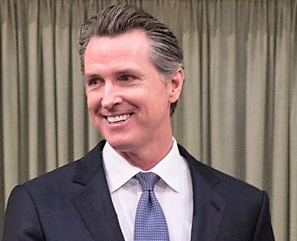
For now, many school districts have begun making cuts to programs and staff as expenses rise and revenues can’t keep pace. An additional revenue challenge comes by way of a cap on some property taxes due to Proposition 13.
State funding of schools has declined from being at the top nationally 50 years ago to being among the bottom 10 states in per-pupil funding and staffing for teachers, counselors, nurses and librarians.
These issues could also undermine California’s current prosperity — home to the fifth-largest economy in the world — if soaring costs and underinvestment in schools contribute to people leaving the state.
Oakland Unified School District is considering millions in cuts, has a ratio of one counselor per 600 students and has turned to donations to fund sports programs.
As part of his 2019-20 budget proposal, Gov. Gavin Newsom pointed to one way forward through more state aid for schools. The proposal includes boosting K-12 and special education funding, and $3 billion in CalSTRS relief for schools. (LAUSD, for example, has $15.2 billion in unfunded pension and other post-employment liabilities.)
This was welcome news and a good first step. Yet, as the recent labor strife underscores, these partial measures are a far cry from what schools need to provide all students with a high-quality education. That’s why CSBA has been working to secure Full and Fair Funding for California’s public schools. Board members can help with the effort by asking their constituents to sign the petition for Full and Fair Funding of California’s public schools. The petition calls on the State Legislature to raise per-pupil funding to the national average by 2020 and to the average of the top states by 2025. CSBA encourages you to sign the petition at www.fullandfairfunding.org and to share the link widely with family, friends and community.
As Gov. Newsom said in his State of the State speech Feb. 12, “We’re still 41st in the nation in per pupil funding. Something needs to change.”